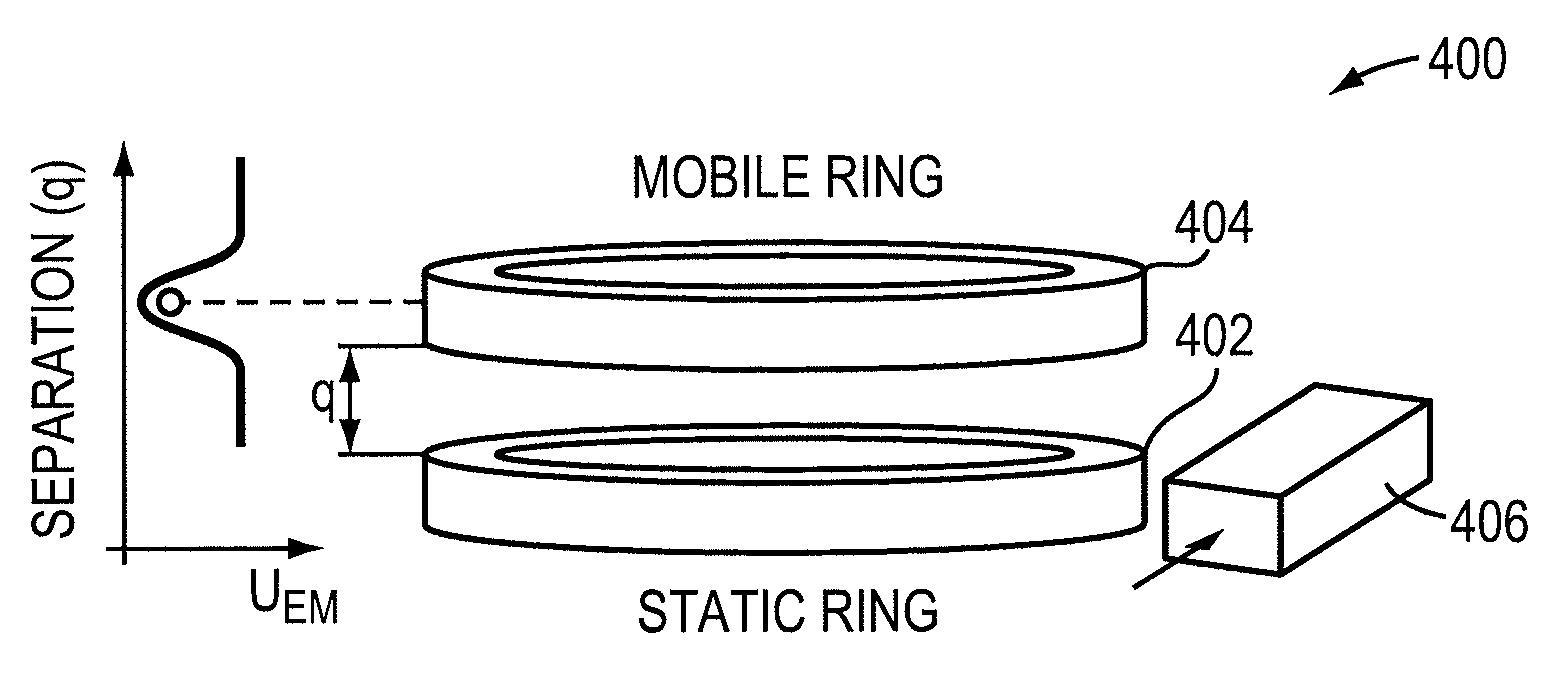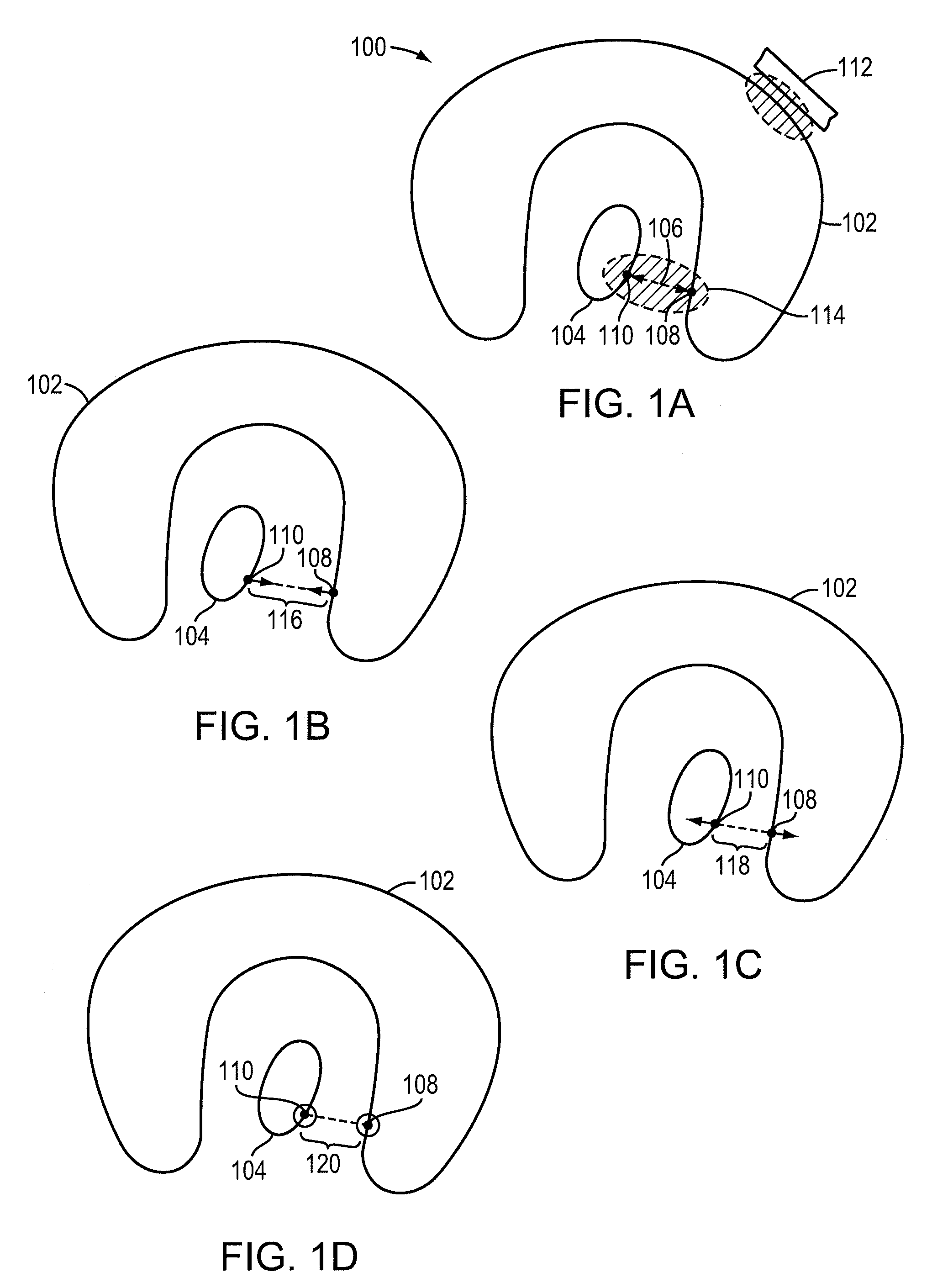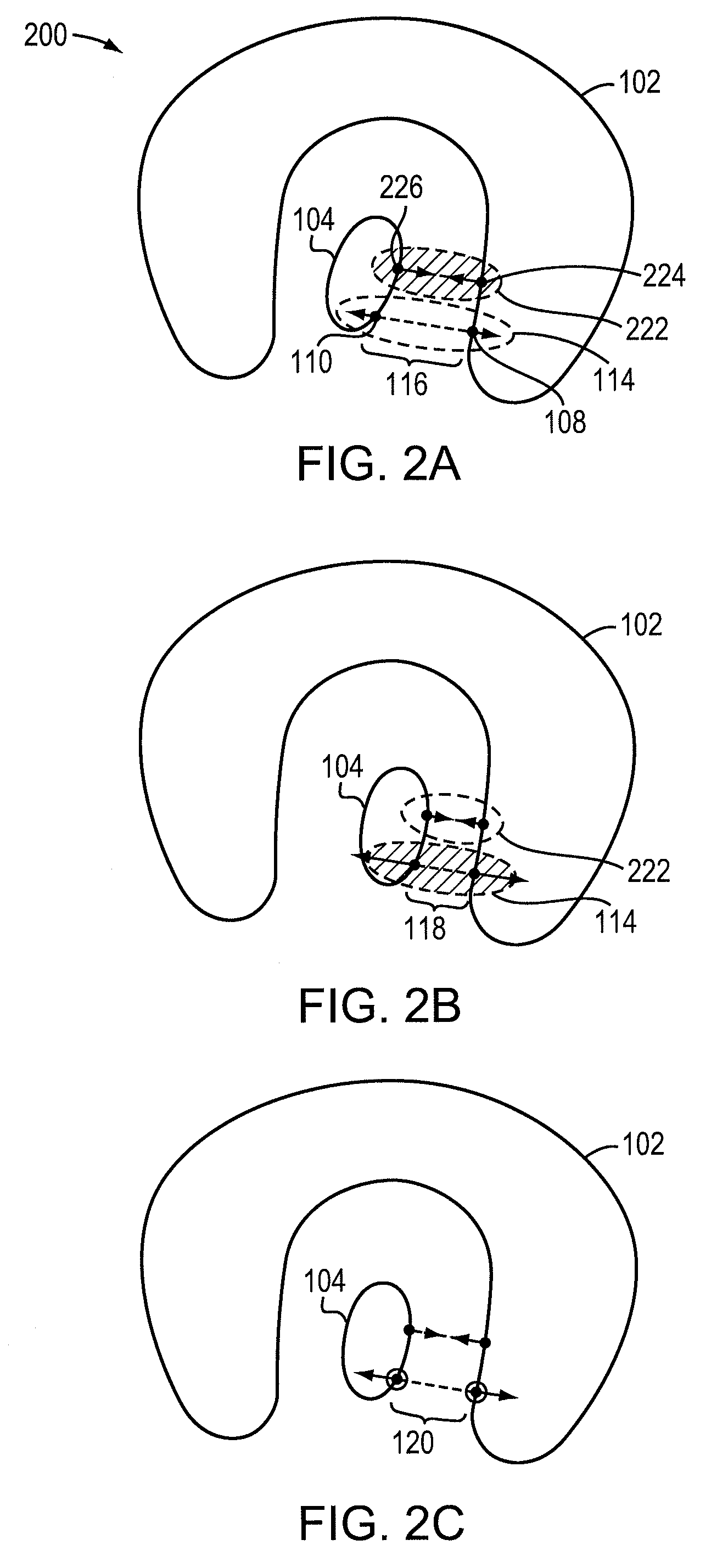Controlling optical resonances via optically induced potentials
a technology of optical resonance and potential, applied in the field of self-adaptive, coupled strong confidence photonic devices, can solve the problems of extreme sensitivity of hic photonic circuits to fabrication uncertainties, number of challenges to be addressed, and the sensitivities of hic circuits
- Summary
- Abstract
- Description
- Claims
- Application Information
AI Technical Summary
Benefits of technology
Problems solved by technology
Method used
Image
Examples
Embodiment Construction
[0041]In general, embodiments of the invention use optical forces between optically coupled strong-confinement photonic devices to adjust a mechanical degree of freedom between the devices, such as a relative position or orientation. The setting of the mechanical degree of freedom, in turn, affects the strength of optical coupling, and, consequently, of the forces between the devices. At optical resonances of the combined system, the coupling is typically particularly strong. Moreover, the resonance frequencies may depend on the coupling. By exploiting this dependence, optomechanical systems that self-adjust to trap optical resonances, and / or spectrally bond the resonances to an input light signal, may be designed.
[0042]The devices used in various embodiments of the invention contain strong-confinement photonic structures (SCPS). As used herein, an SCPS is a structure capable of confining, and optionally enhancing, an optical-regime electromagnetic field within a space on the scale ...
PUM
 Login to View More
Login to View More Abstract
Description
Claims
Application Information
 Login to View More
Login to View More - R&D
- Intellectual Property
- Life Sciences
- Materials
- Tech Scout
- Unparalleled Data Quality
- Higher Quality Content
- 60% Fewer Hallucinations
Browse by: Latest US Patents, China's latest patents, Technical Efficacy Thesaurus, Application Domain, Technology Topic, Popular Technical Reports.
© 2025 PatSnap. All rights reserved.Legal|Privacy policy|Modern Slavery Act Transparency Statement|Sitemap|About US| Contact US: help@patsnap.com



